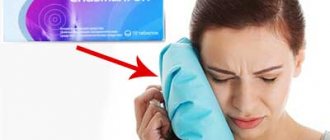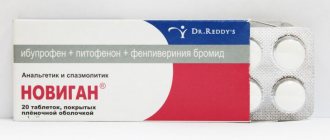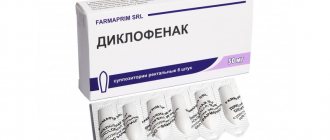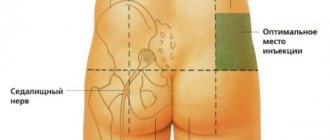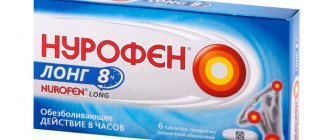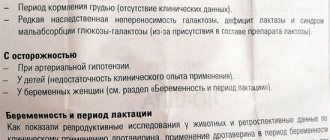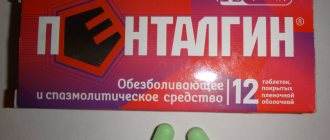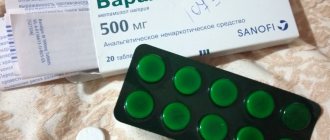The drug represents a group of combined drugs, its main properties: analgesic, antispasmodic. It features a multi-component composition, which ensures a universal action of the product. The effectiveness of the drug is also explained by pharmacodynamics, since pain is often caused by spasms of soft tissues and blood vessels. Accordingly, the purpose of this remedy allows you to eliminate a number of negative manifestations at the same time.
The main properties of Spazgan: analgesic, antispasmodic.
Release forms and composition
You can purchase the medicine in two versions: tablets and solution. The concentration of active components is determined by the release form.
Pills
The main substances exhibiting antispasmodic and analgesic activity:
- metamizole sodium - 500 mg;
- pitofenone hydrochloride - 5.0 mg;
- fenpiverinium bromide - 0.1 mg.
The composition includes components that do not show activity:
- lactose;
- magnesium stearate;
- colloidal silicon dioxide.
The product in question is offered in packages containing 2 or 10 blisters, each containing 10 tablets.
The product in question is offered in packages containing 2 or 10 blisters, each containing 10 tablets.
Injection
Concentration of active substances in 1 ampoule:
- metamizole sodium 2.5 g;
- pitofenone hydrochloride 10 mg;
- fenpiverinium bromide 100 mcg.
You can purchase the medicine in packages of 5 ampoules, each of which contains 5 ml of the drug. Additionally, the composition also includes water for injection; there are no other auxiliary compounds.
pharmachologic effect
The drug is a non-narcotic analgesic, an antispasmodic. Each of the components alone is weaker than in combination. Metamizole sodium exhibits analgesic properties, is an antipyretic and belongs to the group of pyrazolones. According to the principle of action, the substance is similar to NSAIDs. Under the influence of metamizole sodium, there is a decrease in the rate of release of prostaglandins from arachidonic acid, and there is an effect on cyclooxygenase isoenzymes.
This component is involved in a number of biochemical processes in the body: it suppresses the production of endoperoxides, free radicals, and bradykinins. The analgesic effect is due to inhibition of the process of pain impulses through the Burdach and Gaulle bundles. Under the influence of metamizole, the sensitivity limit of the thalamic centers increases. Due to this, unpleasant sensations appear under more intense external influences than under normal conditions.
The drug is a non-narcotic analgesic, an antispasmodic.
Metamizole sodium has a weak anti-inflammatory effect. At the same time, there is a negative effect on the mucous membranes of the gastrointestinal tract and water-salt balance. Due to its ability to remove heat, this substance is classified as an antipyretic.
The other component (pitofenone hydrochloride) is characterized by a direct myotropic effect. Moreover, its pharmacodynamics is based on providing a relaxing effect on soft tissues. As a result, a papaverine-like effect on the body is observed.
Phenpiverinium bromide helps reduce the level of excitation of M-cholinoreactive structures. This substance is characterized by a myotropic effect. This means that its main functions are vasodilating and relaxing effects. Under the influence of this component, the tone of various internal organs decreases: the gastrointestinal tract, biliary tract and bladder, bladder. Due to this, there is a decrease in the intensity of symptoms provoked by smooth muscle spasms.
Pharmacokinetics
The components contained in the drug are instantly absorbed from the gastrointestinal tract after oral administration. The effect of injections when using a liquid substance is achieved faster. The level of bioavailability of active components varies significantly from 30 to 60% depending on the type of substance. All compounds in the composition undergo a transformation stage. This releases active components involved in the biochemical processes of the body. A positive effect is observed within half an hour after using the drug. Peak activity is reached within a few hours.
The components contained in the drug are instantly absorbed from the gastrointestinal tract after oral administration.
What does Spazgan help with?
The main direction of application of the remedy in question is pain of various etiologies. It is advisable to use it for mild to moderate symptoms. For intense pain, the drug is ineffective. Pathological conditions for which it is permissible to use the medicine:
- headache;
- intestinal, biliary or renal colic;
- dysmenorrhea (pain in the abdominal area during menstruation), as well as other diseases of the genitourinary system, accompanied by a spastic condition;
- biliary dyskinesia;
- toothache;
- symptomatic treatment when pain occurs due to the development of a number of joint pathologies (osteochondrosis), neuralgia, myalgia.
The drug in question can be used not only in monotherapy (as the main measure), but as part of complex treatment in a number of cases: the recovery period after surgery, diagnostics using a method that requires minimally invasive procedures. Additionally, the drug can be used for colds against the background of increased temperature (hyperthermia) and the development of inflammatory processes.
Indications
The main indication for the use of Spazgan is spastic pain in the smooth muscle tissue of internal organs. The medicine is also prescribed for migraines, renal colic or biliary colic, to relieve pain due to neurological syndrome.
However, the drug Spazgan is also used in dental practice in the following cases:
- superficial or deep caries;
- painful eruption of wisdom teeth;
- pathological processes in the pulp;
- fluxes, cysts in periodontal tissues;
- inflammation of the gums;
- period after tooth extraction;
- jaw injury;
- recovery after dental surgical treatment;
- the first week of adaptation to the braces system, etc.
Contraindications
The disadvantage of this drug is a large number of restrictions:
- a negative individual reaction to the effects of any of the components in the drug;
- severe pathologies of the liver and kidneys, which is due to the participation of these organs in metabolization processes, which means that when the main substances are transformed, the load on them will increase;
- genetic disorder - lack of glucose-6-phosphate dehydrogenase;
- tachyarrhythmia;
- obstruction of any of the gastrointestinal tract organs;
- hypertrophic changes in prostate tissue, which is manifested by a violation of the process of urinary diversion;
- angle-closure glaucoma;
- disruption of the hematopoietic system;
- megacolon.
Additionally, a number of relative contraindications are noted:
- tendency to lower blood pressure;
- mild or moderate forms of renal and liver failure;
- respiratory tract diseases (in particular bronchial asthma);
- various types of allergies (acute rhinitis and urticaria), which developed while taking NSAIDs and acetylsalicylic acid, in particular.
List of main medical contraindications
The list of contraindications to the use of Spazgan is extensive. It cannot be used in the following cases:
- For heart failure;
- Angina pectoris, tachycardia, tachyarrhythmias;
- Impaired liver and kidney functions;
- Inhibition of bone marrow hematopoiesis;
- Glaucoma, cataracts;
- Intestinal obstruction;
- Intolerance to the main and auxiliary components of the drug.
Spazgan is prohibited during pregnancy and breastfeeding because clinical trials have never been conducted on pregnant women. During this period, you can use other painkillers that have a delicate, gentle effect on the fetus.
If you have abdominal pain of unknown etiology, you should not take any painkillers at all. This rule is the same for all patients. The drug acts on brain receptors, blocking them.
Our readers successfully use ReCardio to treat hypertension. Seeing how popular this product is, we decided to bring it to your attention. Read more here...
How to take Spazgan
The drug in question is not recommended to be taken for longer than 5 days.
Before or after meals
There are no clear instructions. However, in order to reduce the level of aggressive action, the drug should be taken after meals.
For pain of various etiologies
Dosage in tablets: 1-2 pcs. up to 4 times a day. The drug in the form of a solution is used in an amount of 2 ml once. It is permissible to administer up to 10 ml per day. This amount is divided into several doses.
The drug increases or decreases blood pressure
It is recommended to use the drug with caution in patients with a tendency to hypotension, since it affects the functioning of the cardiovascular system, which is due to its vasodilating effect. This means that this remedy can help reduce blood pressure.
It is recommended to use the drug with caution in patients with a tendency to hypotension.
Mode of application
Each package of the drug contains instructions for use, by reading which you can learn how to take it correctly for headaches:
Adults and children from 15 years of age drink 1-2 tablets, preferably after meals 2-3 times a day. You are allowed to take no more than 6 tablets per day. The duration of therapy is no longer than 5 days. An increase in the recommended therapeutic course can only be carried out under the supervision of a specialist.
Spazgan can be taken by children with the permission of a doctor. Typically, unless the specialist makes other recommendations, children:
- 6-8 years old take ½ tablet.
- 9-12 years – ¾ tablets.
- 13-15 years – one tablet per day no more than 2-3 times.
Parenterally, adult patients and children over 15 years of age are administered a solution of 2 ml twice a day. The daily dosage should not exceed 4 ml.
Side effects from taking Spazgan
Negative reactions develop infrequently. The most common side effects that occur are:
- urticaria and other forms of allergic reactions, including those accompanied by Quincke's edema;
- exudative erythema;
- epidermal necrolysis of a toxic nature;
- burning sensation in the abdomen;
- increased dryness of the mucous membranes of the oral cavity;
- headache and dizziness;
- hypotension;
- pathological conditions accompanied by impaired heart rate (tachycardia).
If the drug is taken longer than the recommended period, pathological conditions of the hematopoietic system develop: agranulocytosis, thrombocytopenia, leukopenia. In some patients, the urine changes color to red.
Contraindications to taking spazgan
You should not take this medicine before visiting your doctor. This can make diagnosis difficult and reduce the effect of anesthetics during dental procedures.
Spazgan is not used to relieve toothache if the patient has the following diseases:
- heart failure;
- heart rhythm disturbance;
- hypotension;
- bronchial asthma;
- chronic liver diseases;
- renal failure;
- diseases of the hematopoietic system;
- glaucoma;
- prostatic hypertrophy;
- intestinal obstruction.
The medicine should not be used simultaneously with hormonal drugs, contraceptives, antidepressants, cytostatics, or antibiotics of the cyclosporine group.
Overdose
If the amount of the drug increases significantly, a number of symptoms appear. Among them are:
- dryness of the mucous membranes of the oral cavity;
- nausea, vomiting soon begins;
- decreased blood pressure, which causes general weakness;
- disturbance of accommodation and consciousness;
- drowsy state;
- kidney and liver dysfunction;
- convulsive syndrome.
First of all, it is necessary to perform gastric lavage and take a sorbent, which will remove excess amounts of the drug from the body. After this, symptomatic therapy is carried out.
Features of application
It is important to control the level of leukocytes in the blood.
If pathological conditions develop that are caused by disruption of the hematopoietic system (agranulocytosis, thrombocytopenia), the course of treatment is immediately stopped.
Injections can be performed only in cases where there are contraindications for the use of tablets.
If the drug in liquid form is administered quickly, the risk of a significant decrease in blood pressure increases.
During pregnancy and breastfeeding
The drug is prohibited for use in the 1st trimester and during the last 6 weeks before the expected date of birth.
During lactation, the remedy in question should also not be used.
In childhood
If a drug is considered in tablet form, it should not be used in patients under 8 years of age. The injection solution is not prescribed to children under 3 months, or when the child’s body weight at this age is less than 5 kg.
If a drug is considered in tablet form, it should not be used in patients under 8 years of age.
For patients over 15 years of age, an adult dose of the drug in solid form is recommended. Children from 12 to 14 years old need to take 1 tablet once. Up to 6 tablets are prescribed per day. Patients aged 8 to 12 years are recommended to take 0.5 tablets several times a day.
When administered parenterally, the delivery rate of the drug is 5 ml (contents of 1 ampoule) for 5-8 minutes. If repeated use of the drug is required, take a break of at least 6 hours. The dosage depends on the age and body weight of the child. For example, children over 15 years of age can use the same amount of medicine as adults.
Effect on concentration
Driving a vehicle during therapy is not recommended, since the active substances affect consciousness, the cardiovascular system and the organs of vision.
Features of taking pills
Spazgan in tablet form has a more extensive list of additives than the injection solution. This allows you to achieve the following:
- give the tablet strength and dosage accuracy of all substances;
- ensure a constant intensity of drug dissolution in the gastrointestinal tract;
- increase shelf life.
An extensive list of excipients provokes a more frequent occurrence of allergic reactions compared to the injection solution.
To get rid of toothache, Spazgan is not prescribed to children under 8 years of age. Other age categories can take the medicine as follows:
- 8-11 years – half a tablet every six hours;
- 12-14 years - 1 tablet every six hours, but with intense pain you can take 1.5 tablets at a time;
- over 15 years old – up to 2 tablets every 6 hours.
Do not chew the tablets and wash them down with water.
Drug interactions
Before starting treatment, you should consider the compatibility of the drug in question with other medications, which makes it possible to avoid the development of complications.
Driving a vehicle during therapy is not recommended.
With other drugs
If analgesics of this group are used simultaneously, the intensity of their toxic effects on the body increases.
The metabolism of metamizole is impaired under the influence of tricyclic antidepressants, Allopurinol, and oral contraceptives. In addition, the degree of toxicity of this substance increases.
Metamozol has a weaker effect with the simultaneous use of drugs that are inducers of microsomal liver enzymes (barbiturates, phenylbutazone, etc.).
The concentration of Cyclosporine decreases under the influence of Spazgan.
The analgesic properties of the drug in question are enhanced by tranquilizers and sedatives.
Alcohol compatibility
The medicine is not used together with alcohol-containing drinks.
The medicine is not used together with alcohol-containing drinks.
Analogs
Effective drugs that can be used as substitutes for Spazgan:
- Spasmalgon;
- Maxigan;
- Renalgan;
- Trinalgin;
- Spasmaton;
- Spasmopharm;
- Spazgan Neo.
Reviews from doctors
Bakieva E. B., dentist, 40 years old, Ufa
I prescribe it to patients for pain in various cases. The drug acts quickly, but it has a drawback - it contains a substance similar in properties to analgin, so it cannot be taken for a long time due to the risk of complications.
Nazemtseva R.K., gynecologist, 36 years old, Krasnodar
I often recommend this remedy to patients with dysmenorrhea and other menstrual irregularities that are accompanied by severe pain. The effect of using Spazgan is visible almost immediately. Another advantage I consider is the reasonable price.
Spazgan dosage for toothache
Before using the medicine, you should carefully read the instructions for use. Spazgan for toothache is effective in the following conditions:
- increased sensitivity of teeth due to violation of the integrity of the enamel;
- caries;
- pulpitis;
- periodontitis;
- inflammation of the periosteum due to infection;
- traumatic injuries: chips, cracks, root fractures;
- damage to the trigeminal nerve.
Spazgan tablets are intended for oral use. They are taken when pain occurs, without chewing, with plenty of liquid.
The medicine effectively eliminates the symptoms, but not the causes of the disease, so it is not intended for long-term use.
The dosage of the drug depends on the intensity of the pain and the cause of its occurrence. The recommended amount for adults is 1-2 tablets. In this case, the daily dose should not exceed 6 tablets. The interval between taking the drug should be at least four hours.
The duration of use of Spazgan for dental diseases should not exceed three days. In addition, if the drug is used frequently, its effectiveness may decrease.
Spazgan tablets are allowed to be used to relieve toothache in children over 5 years old. Before using them, you should consult your pediatrician or pediatric dentist.
The recommended daily dose is 2 tablets. The interval between taking the medicine should be at least 6 hours. For children 8-11 years old, it is allowed to take 4 tablets per day at regular intervals.
